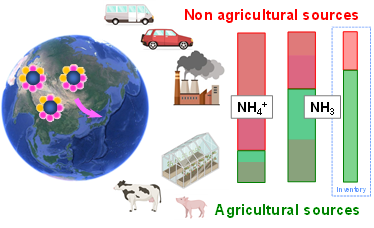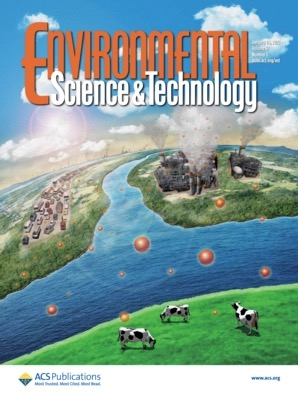News
Published in the International Journal Environmental Science & Technology
Ms. Otoha Yoshida, a graduate of our university (currently at the Japan Environmental Science and Technology Institute), and Ms. Nana Suto, a graduate of our graduate school (currently at the Japan Automobile Research Institute), co-authored a research paper titled “Long-Term Source Apportionment of Ammonium in PM2.5 at a Suburban and a Rural Site Using Stable Nitrogen Isotopes.” This study was published online in the international academic journal Environmental Science & Technology on January 24, 2023 (Reiwa 5). The work was also selected for the journal’s Supplementary Cover.
Journal: Environmental Science & Technology
Title: Long-Term Source Apportionment of Ammonium in PM2.5 at a Suburban and a Rural Site Using Stable Nitrogen Isotopes
Authors: Hiroto Kawashima, Otoha Yoshida, Nana Suto
Website: https://doi.org/10.1021/acs.est.2c06311
Ammonia is one of the harmful substances in the atmosphere and plays a major role in the formation of fine particulate matter such as PM2.5. In this study, we analyzed the nitrogen stable isotope ratios of ammonium ions in PM2.5 collected over two and a half years in Yurihonjo City (Akita Prefecture) and Tsukuba City (Ibaraki Prefecture), and conducted source apportionment analysis. Such a long-term dataset is unprecedented globally. While ammonia emissions are generally believed to originate mostly from agricultural sources (e.g., fertilizer volatilization or livestock waste), more than 70% of the ammonium ions in PM2.5 were estimated to come from non-agricultural sources (e.g., ammonia slip from factories or automobile exhaust). Moreover, a reanalysis of previously measured atmospheric ammonia gas in Yurihonjo City revealed that it originated primarily from agriculture. This indicated, for the first time, that the sources of gaseous ammonia and particulate ammonium differ significantly, and that once ammonia is incorporated into PM2.5, it can be transported over long distances.
Unlike many other air pollutants, atmospheric ammonia is predicted to increase in the future. In Japan, research is underway on co-firing ammonia with coal in thermal power plants. However, due to issues such as leakage, caution is warranted in its implementation.
This research was based on long-term efforts to resolve analytical challenges in nitrogen isotope measurements of ammonia and to elucidate mechanisms of particle formation. The work involved considerable difficulties, including the use of specialized bacteria for isotope analysis, but the team is relieved to see the study successfully published. Notably, Ms. Otoha Yoshida conducted the chemical analysis in this study, which marks her fourth publication in an international academic journal based on her undergraduate thesis research.
This work was supported by the Environment Research and Technology Development Fund (as a principal investigator: Hiroto Kawashima), the Grants-in-Aid for Scientific Research (KAKENHI) – Scientific Research (B) (International Research), and several foundations including the Nissei Foundation, Heiwa Nakajima Foundation, and Sumitomo Foundation. It was also supported by a KAKENHI Grant for Early-Career Scientists (PI: Nana Suto). We also thank research assistants Gaku Fujishima, Yuya Tsuda, Momoka Suto, Rui Kato, and others for their support in managing the denitrifying bacteria and conducting chemical analyses.

